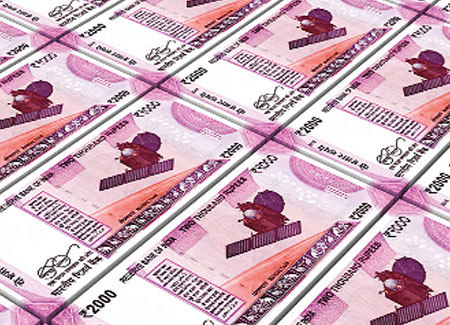
The government has been nudging the Reserve Bank of India (RBI) to allow rupee depreciation. The Centre wants a weaker rupee so that exporters, who have been hit hard by a strong domestic currency, get a boost. The central bank’s intervention in the forex market with this objective has, however, invited strong criticism from economists.
Chief economic adviser Arvind Subramanian on Monday said the RBI has been intervening to stem the rupee’s appreciation. Subramanian said there was a “big” appreciation of the rupee between January and April, which had adversely impacted exports and the country’s import-competing sectors. Last week, he had said the RBI has been intervening in the forex market for the past three months and he is hopeful of moderation of forex in coming days.
“We have lots of challenges ahead... we have seen growth slowing down and investment not picking up. So, we have to attack this problem on many fronts — exchange rate, public investments while maintaining macroeconomic stability,” he said last week.
Economists said that RBI has been managing its job of currency management well and statements from the government to intervene in the forex market would prove disastrous.
NR Bhanumurthy, professor at National Institute of Public Finance and Policy, said, “The finance ministry’s suggestion of intervening in the forex market to maintain a weak rupee is unwarranted as the RBI has been managing the forex market in a decent manner and most importantly the exchange rate has a multiple impact, not necessarily only on growth but n the external account as well as on monetary policy.” “In any case the relation between a weak rupee and the GDP growth is not established empirically,” added Bhanumurthy.
The rupee has appreciated against the dollar by about 7 per cent in nominal terms since November 2016 lows, while the appreciation in real terms has been even more significant. It is not yet clear how much rupee appreciation has played a part, but net exports have subtracted 2.6 per cent from growth in April-June 17, leading to a lower-than-anticipated GDP outturn.
The RBI controls the movement of the rupee using several tools such as changes in interest rates, relaxation or tightening of rules for fund flows, tweaking the cash reserve ratio (the proportion of money banks have to keep with the central bank) and selling or buying dollars in the open market. It also fixes the statutory liquidity ratio, that is, the proportion of money banks have to invest in government bonds, and the repo rate, at which it lends to banks.
The rupee on Monday lost a whopping 31 paise to end the day at a fresh six-month low of 65.10 a dollar on continuous outflows from local stocks by foreign institutional investors (FII) and month-end dollar demand from oil importers. This was the weakest closing for the home currency since March 24, when it had ended at 65.41 against the greenback. Besides panic dollar buying by corporates and importers, fears over fund outflows from domestic capital market led to weak forex market sentiment against the backdrop of imminent Fed rate hike and unwinding of its stimulus measures amid unsupportive global factors.



